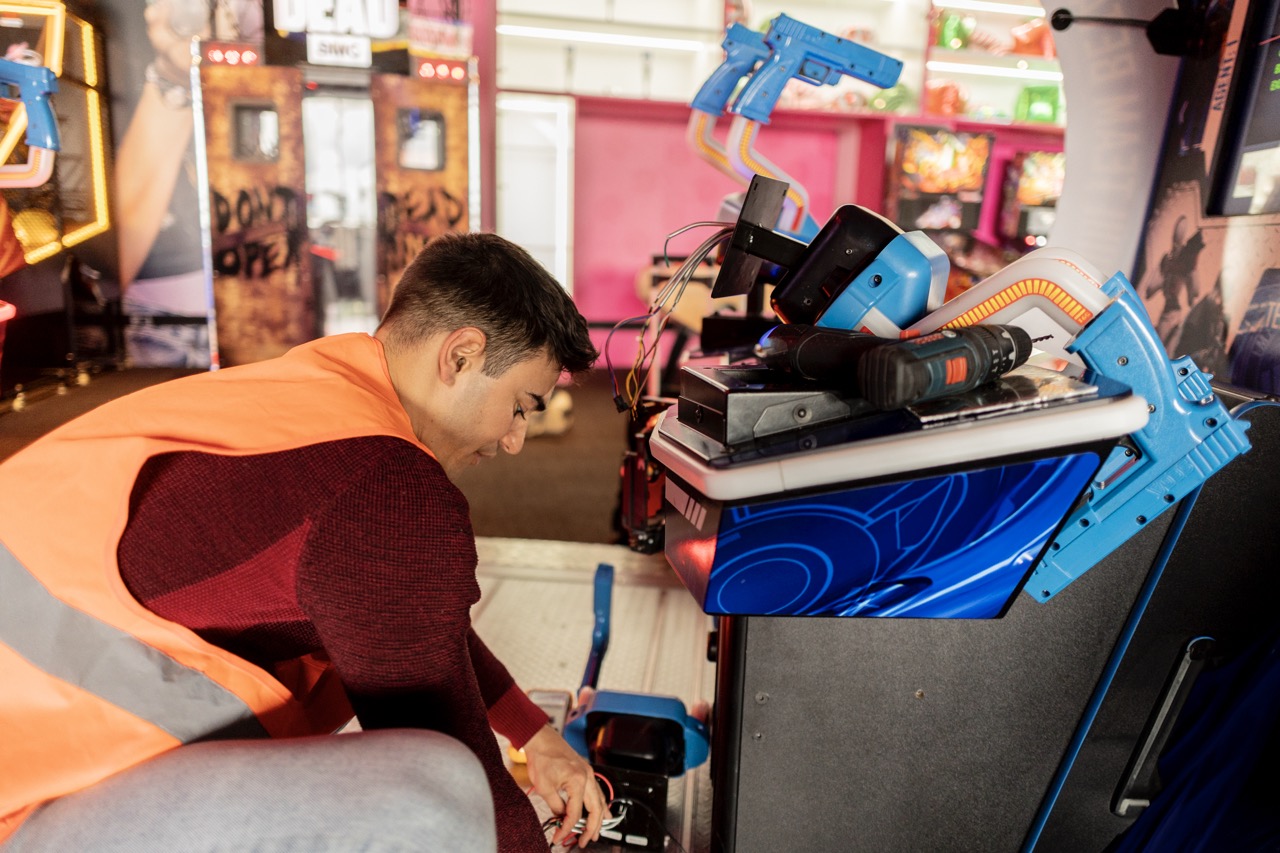In the world of gaming, certain titles come along and change the landscape forever. One such game is "Defender," a classic arcade shooter that not only captivated players upon its release but also paved the way for future gaming innovations. Launched in 1981 by Williams Electronics, Defender was more than just a game; it was a phenomenon that ushered in the "Era of Pure Reflex." This article will explore how Defender transformed the gaming experience, defined player engagement, and left an indelible mark on modern gaming.
The Rise of Defender: A Game-Changer in Gaming History
When Defender hit the scene in 1981, it entered a gaming world dominated by simpler mechanics and straightforward gameplay. Unlike its contemporaries, Defender introduced players to a fast-paced, multi-directional scrolling shooter that demanded quick reflexes and strategic thinking. With its unique gameplay and captivating graphics, it quickly became a staple in arcades and a favorite among gamers. Players were drawn in by the adrenaline rush of saving humanoids from alien abductors while navigating through a complex landscape.
Defender was revolutionary not just for what it offered but also for how it changed player interactions. It marked a significant shift from the high-score mentality prevalent in earlier arcade games. Players were now engaged in a more dynamic experience, having to save lives, dodge enemies, and manage their spacecraft’s fuel. This complexity added layers to the gameplay, enticing players to invest more time and energy into mastering the game, leading to its widespread popularity and success in arcades across the globe.
The design of Defender also had a profound impact on the gaming industry. Developers began to recognize the potential for deeper gameplay experiences, moving beyond simplistic mechanics to create games that challenged players’ reflexes and decision-making skills. As a result, Defender didn’t just capture the essence of arcade gaming; it set the stage for more intricate titles that followed. The rise of Defender marked a pivotal moment in gaming history, forever changing the direction of game development.
What is the Era of Pure Reflex? Let’s Break It Down
The "Era of Pure Reflex" signifies a shift in gaming that emphasizes player skill and quick responses over strategy or storytelling. This era emerged alongside the popularity of games like Defender, which required players to react swiftly to unpredictable scenarios and opponents. In this environment, reflexes became the primary metric for success, and players found themselves honing their skills to survive and thrive in increasingly challenging landscapes.
This era also reflects a broader cultural shift in gaming, where arcade environments created a competitive atmosphere. Players were not just in it for the fun; they were vying for high scores, bragging rights, and that sweet feeling of mastery. The arcade experience incentivized quick thinking and rapid reactions, pushing players to their limits and encouraging them to improve their reflexes. Each game became a test, making the thrill of competition an integral part of the gaming experience.
Moreover, the Era of Pure Reflex laid the groundwork for many genres we see today. Platformers, shooters, and even puzzle games began incorporating elements that focused on timing, precision, and rapid responses. This focus shifted the gaming landscape and created a new expectation among players: that they would be challenged not just in strategy but also in their ability to think and act swiftly. The evolution of gaming during this era sparked innovations that influenced countless titles to come.
How Defender Redefined Gameplay and Player Strategy
Defender wasn’t just another game; it fundamentally changed how players interacted with digital worlds. The introduction of side-scrolling mechanics allowed for more complex gameplay, making it a standout experience in the early ’80s. Players were no longer limited to a single screen or straightforward paths; they could explore vast landscapes while facing waves of enemies from all directions. This multidimensional approach transformed player engagement, as it demanded constant attention and quick reflexes.
The game’s unique control scheme was another game-changer. Players used a joystick to navigate their spacecraft while buttons enabled firing and hyperspace jumps. This combination meant that effective gameplay hinged on mastering precise movements and timing. As players improved their skills, they developed new strategies, such as prioritizing enemy threats or optimizing rescues of humanoids. This shift in strategy emphasized player adaptability and decision-making, making each session a unique experience.
Additionally, Defender’s scoring system incentivized players to think on their feet. The more humanoids they saved and the more enemies they defeated, the higher their score. This dynamic encouraged players to balance risk against reward, leading to a depth of strategy previously unseen in arcade games. It fostered a competitive spirit that had players coming back for more, eager to outdo themselves and each other. Defender’s gameplay mechanics not only pushed the limits of player reflexes but also redefined how strategies were formulated in gaming.
The Legacy of Defender: Influencing Modern Games Today
The legacy of Defender is palpable in numerous modern titles that have taken inspiration from its gameplay mechanics and design. Many popular games today, from first-person shooters to battle royale formats, owe a debt to Defender’s pioneering approach to multi-directional shooting and fast-paced action. It set a benchmark for what players could expect regarding responsiveness and player agency, continuing to influence new generations of game developers.
Beyond gameplay mechanics, Defender’s emphasis on skill and competition has echoed through the gaming community. Today’s gamers are often drawn to titles that challenge their reflexes and quick thinking, whether in time-attack modes or competitive arenas. This competitive emphasis can be traced directly back to the spirit of high-score battles sparked by Defender. Players today still seek the thrill of mastering their skills, proving that the essence of the Era of Pure Reflex is alive and well.
Furthermore, the design philosophies introduced by Defender have also found their way into user interface design and player experience in modern games. Developers are more aware than ever of the importance of intuitive controls and engaging environments, ensuring that players have the tools they need to respond quickly and effectively. In this way, Defender not only redefined what it meant to be a gamer in the early ’80s but also laid the groundwork for the immersive and competitive experiences that define modern gaming.
Defender was more than just a game; it was a catalyst for change in the gaming industry. By ushering in the Era of Pure Reflex, it redefined how players interacted with games, emphasizing skill, speed, and strategy. Its legacy continues to shape the gaming landscape today, reminding us all of the exhilarating thrill that comes from mastering a challenging game. As we look back at this iconic title, it’s clear that Defender will forever be remembered not just as a game but as a cornerstone of gaming history.










